At the top of every list of “best plants for beginners” or “plants that nobody can kill” is zamioculcas zamiifolia, or the zz plant. Also known by the common name zanzibar gem, this plant is known for its ability to survive in low light conditions where most other plants would wither and die.
But zz plants are so much more than hardy houseplants that you can stick nearly anywhere—they are beautiful plants, with arching branches of foliage on thick stems. They add a nice bit of statuesque height to your decor, and have modern, clean lines. Let’s talk about how to care for a zz plant!
Table of Contents
Where does the zz plant come from?
As always, my rule of thumb when learning to care for a new houseplant is to understand how it grows in nature. The more you can replicate its native habitat in your home, the more a houseplant will thrive!
Zamioculcas zamiifolia will usually be labeled as a zz plant or zanzibar gem, though you may also see it sold as an aroid palm or eternity plant. It is native to the grasslands and forests of eastern Africa, where it is prone to long periods of droughts. Because of this, the zz plant can retain a lot of water in its rhizomes and thick upright stems. Glossy, almost waxy-looking leaflets grow along the stems.

ZZ plant care: light
The zamioculcas zamiifolia is a succulent that can handle pretty low levels of light. This makes the zz plant a perfect candidate for offices, windows that get a lot of shade from trees or deep overhangs, or any room that could use a little bit of life.
Growfully Protip
While your zz plant will do just fine in low light, you won’t see much new growth there.
However, don’t limit yourself to just these darker corners! While a zanzibar gem can handle low light, they will thrive in indirect bright light as well—that’s where you’ll see the most growth. Just avoid direct sunlight, and your zz will be a happy camper.
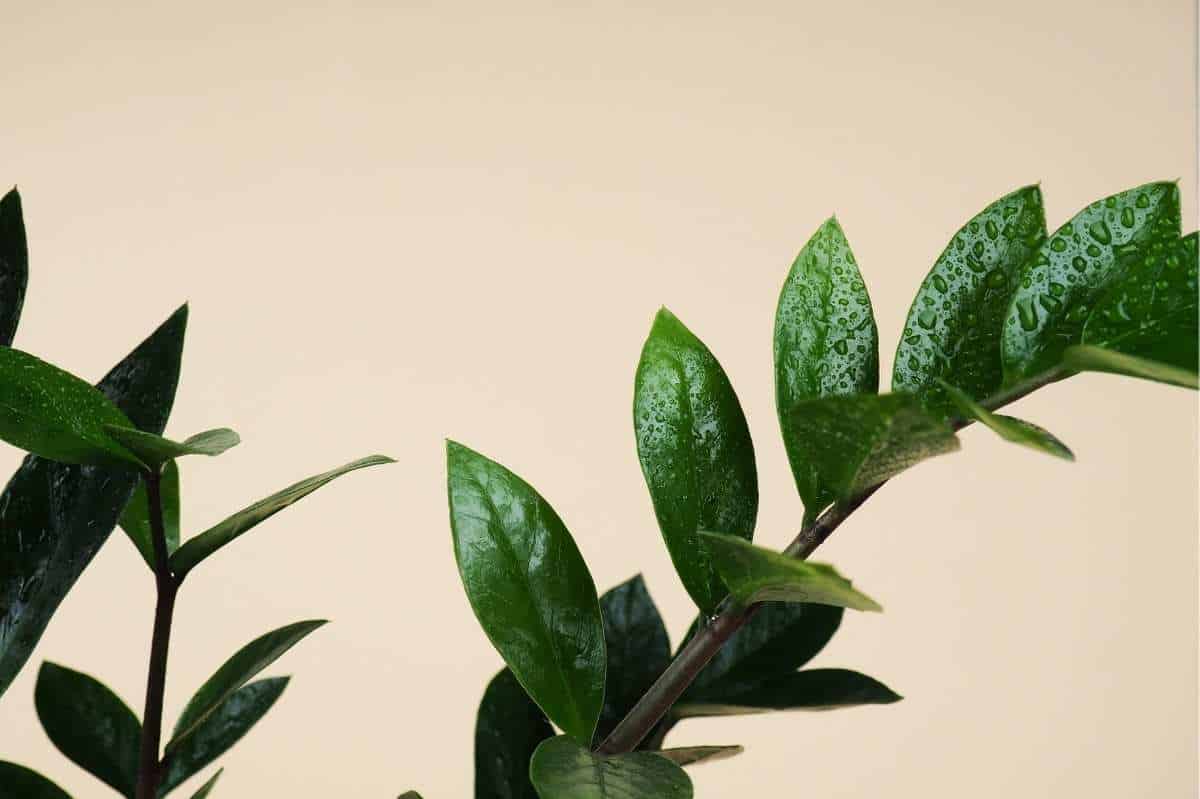
ZZ plant care: water
ZZ plants grow from rhizomes (those bulbs that kind of look like potatoes that you will see in the roots if you repot the plant), which do a stellar job of holding on to water. Because of that, you won’t need to water your zz particularly often. Wait to water your zz until the soil is completely dry all the way through. In a sunny, warm spot, this may mean you are watering every 2-3 weeks. In a darker, cooler spot, it may be more like 4-6 weeks. It all depends on the amount of light and the size of your plant, so keep an eye on the soil!
Growfully Protip
Though zz plants are super hardy, the easiest way to kill one is by overwatering. Remember, their rhizomes store water! It is better to err on the side of under watering and wait a few more days if you aren’t sure if your zz needs water yet.
How to water a zz plant
It is also very important that you not let your zz plant’s roots and rhizomes sit in water. Be sure to choose a pot with drainage holes so that all excess water drains off immediately. When it is time to water, aerate the soil with a wooden chopstick (gently poke around the edges of the pot—make sure not to stab the rhizomes!), and then water thoroughly, until you see water draining out the bottom. Don’t allow water to stand in the saucer.

ZZ plant care: everything else
Soil
ZZ plants need well draining soil to help avoid root rot. While you can use your favorite potting mix if you have a pot with good drainage, some people prefer to mix in some perlite or a cactus mix for even better drainage.
Fertilizer
A balanced liquid fertilizer that is formulated for houseplants is all you need to feed a zz plant.
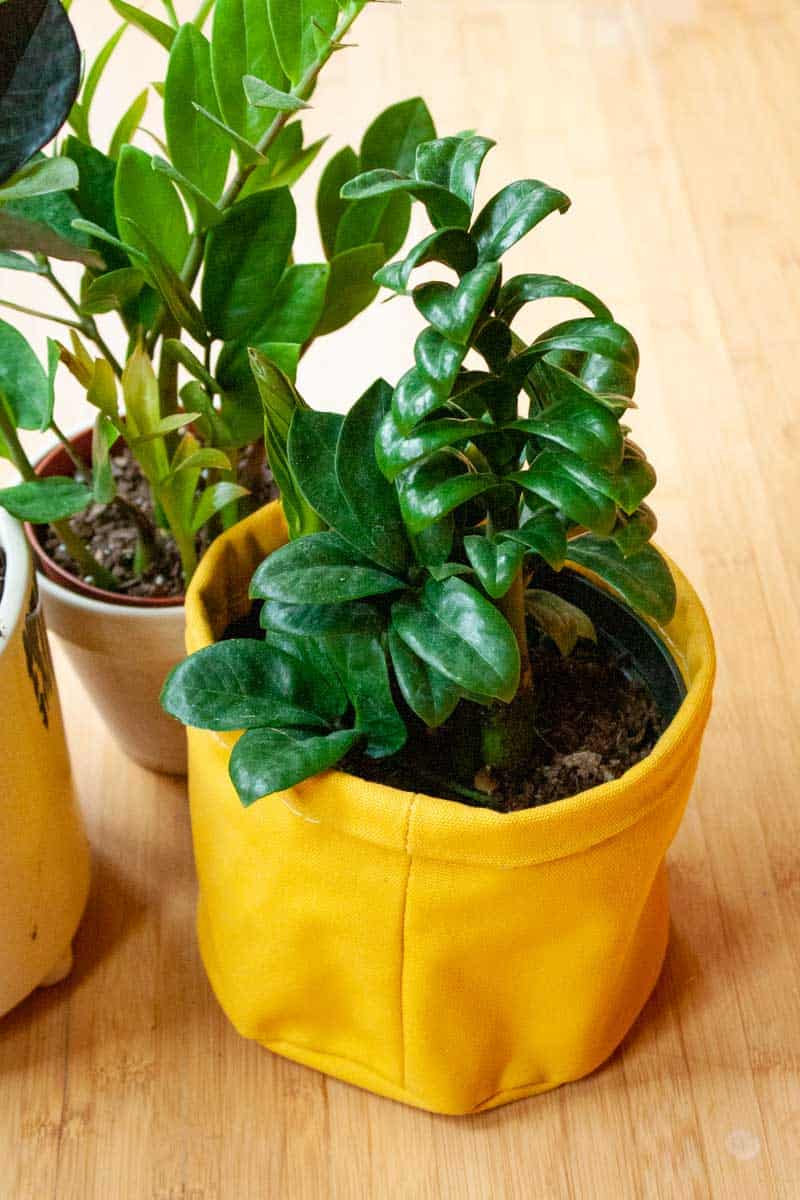
ZZ Plant Care Tips
Here are our top tips for helping your zamioculcas zamiifolia to thrive:
- Water infrequently, but thoroughly. Just because zz plants are vulnerable to overwatering, doesn’t mean you should be stingy with the fluids at watering time! Give your zz a good drink every time you water it.
- Don’t give them too much love. It’s easy to want to show your new plant some extra love and care, and many plant parents do this via watering. But really, zz plants thrive on a little neglect, and will only thrive if you let them dry all the way out between waterings.
- Give them a little shine. Help your plant do its photosynthesis thing by giving the leaves an occasional gentle wipe down when you see a buildup of dust. You don’t need a commercial leaf shine product—instead, a damp cloth will do the trick. Gently wipe the leaves from stem to tip with a soft cloth or sponge dampened with lukewarm water.
- Avoid direct light. Direct light can give your zz plant sunburn (yes, plants can sunburn too!), which will look like brown patches on the leaves. Stick with indirect light.
- More light = more growth. While your zz will do just fine in a dim room, they won’t put out much new growth. If you want your zz to get bigger, it will need some bright, indirect light.
- Buy the size zz that you want for your space. A zz is a very slow grower, so don’t expect to be potting up your plant anytime soon. If you want a big zz plant for the corner of your office, you’re best off buying a big plant to start with—otherwise, you’re going to be waiting a long time.
- Rotate the pot. Like most houseplants, zanzibar gems grow towards their light source. To keep your plant growing upright and evenly on all sides, give the pot a quarter turn every few months.
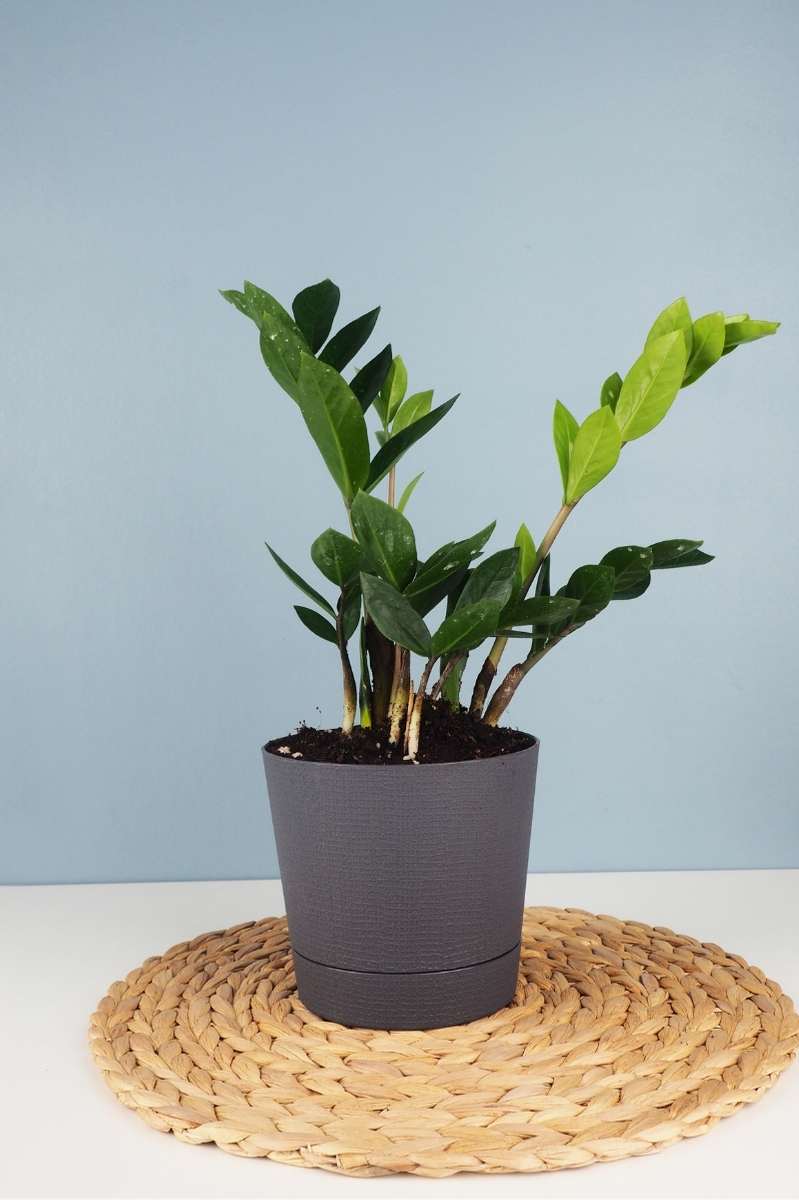
ZZ Plant Problems
ZZ plants are pretty resilient to most pests and diseases. The number one problem you’ll see is yellowing leaves. This is a sign of overwatering—remember, make sure to let the soil dry out thoroughly before watering!
If you notice yellowing leaves, gently tip your plant out of its pot and check the soil and roots. The roots and rhizomes should be pale and crisp. If they are, and the soil feels relatively dry, you can pop your plant back in its pot, and just be careful with your watering moving forward. If the roots and rhizomes are looking dark or mushy though, that’s a sign of root rot, and you’ll need to take some extra steps.
Do ZZ plants like direct sunlight?
That’s a negative. Direct sunlight is the one kind of light that a zz plant can’t tolerate. Indirect light only for these plants!
How do you know when a ZZ plant needs water?
Your zz is ready for more water when the soil is completely dry. You can feel the soil through the drainage holes of the pot—if it feels dry, you’re good to water. Otherwise, gently press your finger at least 2 inches into the soil from the top of the pot. If your finger comes out relatively clean, the soil is dry enough. If there is a decent amount of soil sticking to your finger though, wait awhile longer!
Again, the fastest way to kill a zz is to overwater it, so if you aren’t sure if your plant needs water or not, it can’t hurt to wait a few more days and check again.
It doesn’t happen often, but it is possible to go too long without watering a zz plant. If your zz is dropping its leaves or looking shriveled, get that baby some water ASAP.
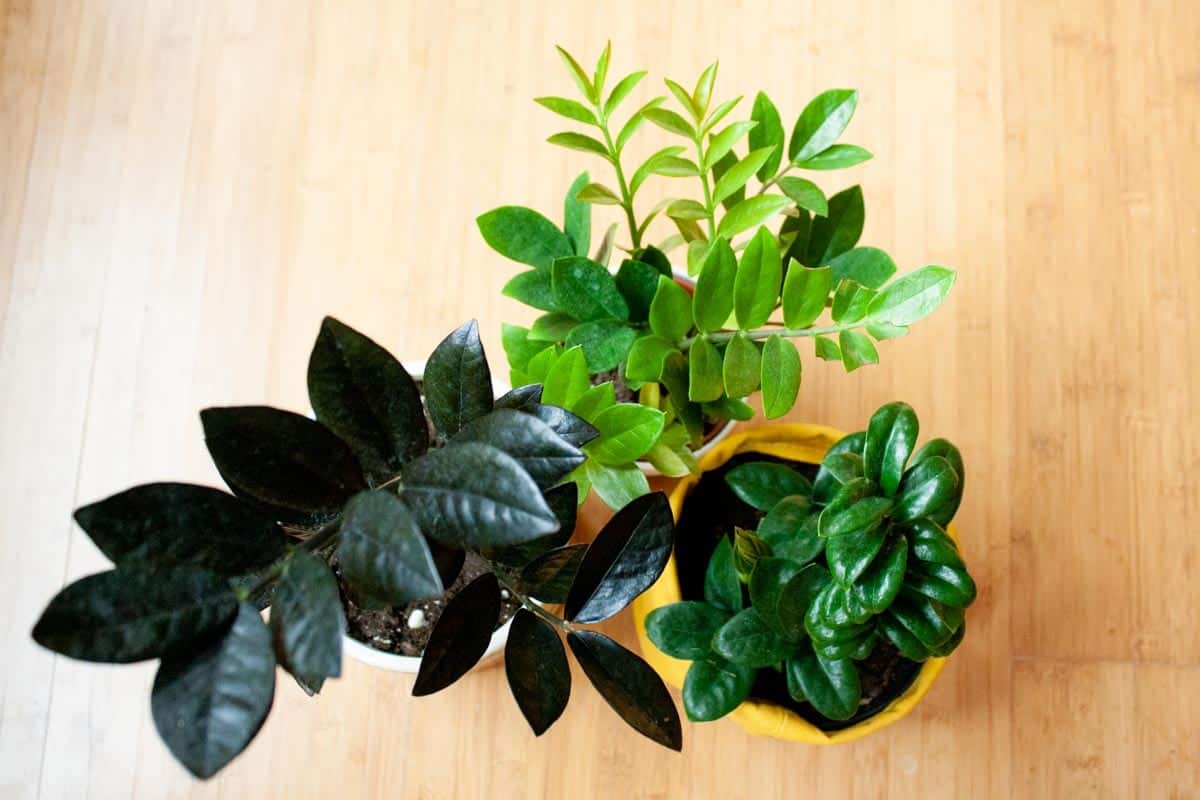
Varieties of ZZ plants
The classic zanzibar gem has glossy leaves that range from the pale green of new leaves to the dark green of more established leaves. But there are two other varieties of zz plants that we recommend you look for, too:
- Raven zz. These look just like the classic zz, but with one exception: the raven zz plant leaves are a deep purple that is so dark, it is almost black.
- Zenzi zz. Occasionally seen labeled as a “dwarf zz,” the zenzi is a more compact version of the zanzibar gem. The leaves grow in more of a spiral around the stem than in a typical zz, and the plant doesn’t get as tall.
Why isn’t my ZZ plant growing?
While we love a zz plant for its ability to bring some life to a dim room, it isn’t going to grow much in low light. If you want your zz plant to get bigger and bushier, you’ll need to give it some more (indirect!) light.
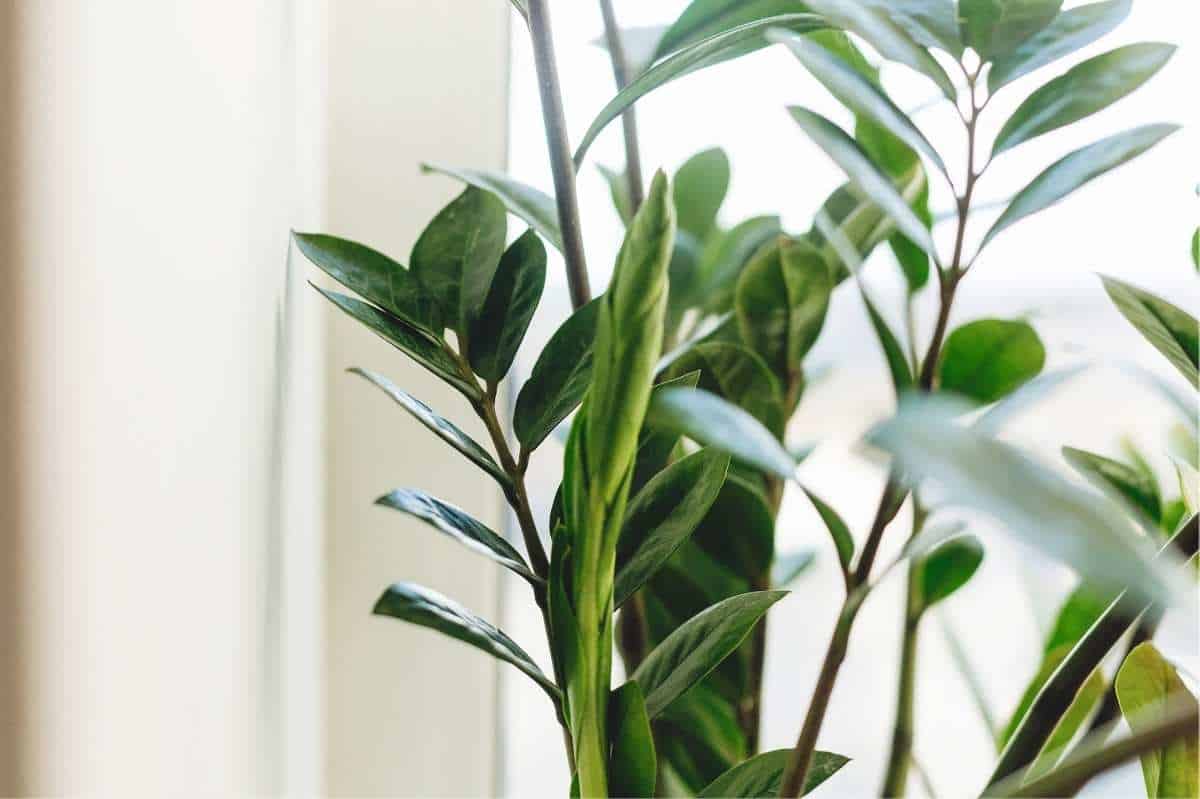
Are ZZ plants safe for pets?
Sorry pet-lovers. All parts of the zz plant can be toxic if ingested, so keep it out of reach of small children and pets.

ZZ Plant Care
ZZ plants are a great choice for anyone looking for an easy-to-care for indoor plant. Read about their care, light, and watering needs here.
Materials
- ZZ Plant
- Well-draining potting soil
Tools
- Container with good drainage
- Wooden chopstick for aeration
Instructions

- Give the plant anywhere from low light all the way up to bright indirect light. The only kind of light that a zz plant won't thrive in is direct sunlight. Do note that you won't see as much new growth in low light.
- Do not overwater. The #1 culprit of zz plant death is overwatering. Make sure that the soil is completely dry before watering.
- Aerate the soil before watering. Use your wooden chopstick to gently poke holes in the surface of the soil to help air and water reach all of the roots and rhizomes before watering. Just be sure not to stab the rhizomes.
- Water thoroughly. When it is time to water your zz, give the plant a good drink, watering until you see water coming out of the drainage hole. Do not allow water to sit in the saucer.
- Wipe down the leaves. When you see a buildup of dust, use a damp cloth or sponge to gently wipe the leaves from stem to tip. This will help the plant be more effective with its photosynthesis.

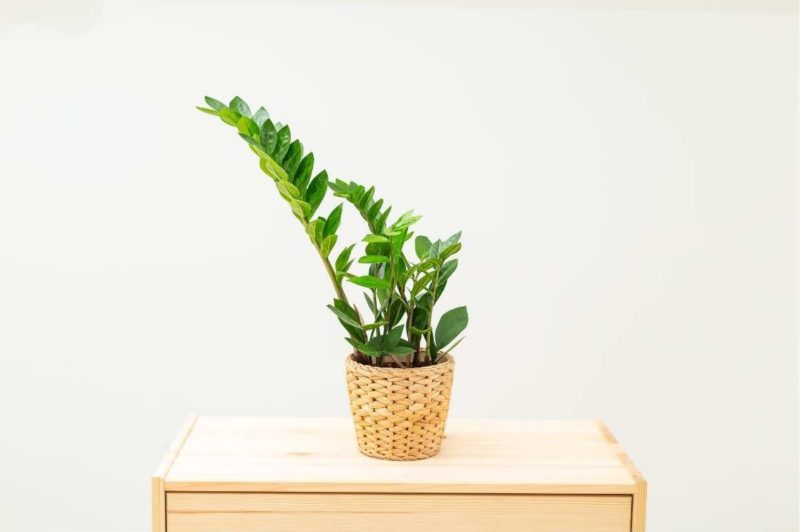
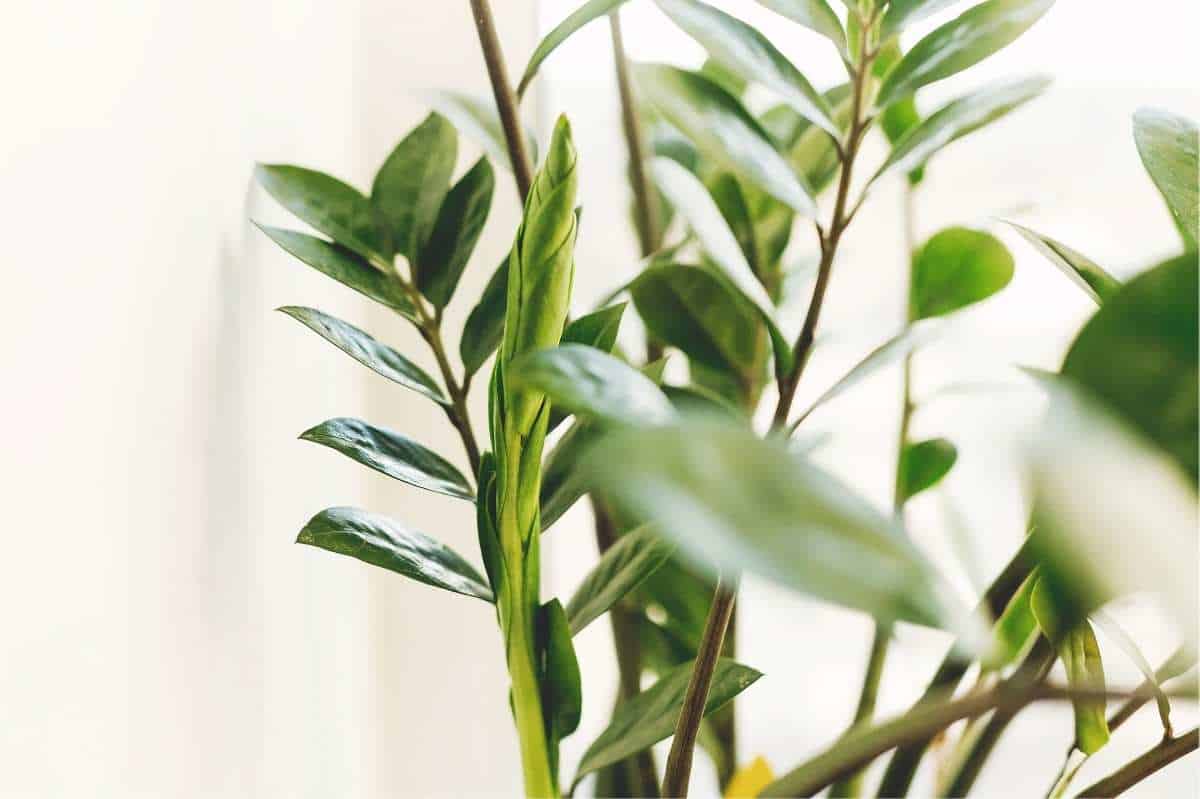






My ZZ plant look healthy for now but on the stem there two brown leaves dry do remove the leaves. What about the heat here in cali my plant not in the window due to the heat but it gets a lot of lightI’m afraid it might not do well. In door plant.
You can go ahead and remove the brown leaves—once they change to brown, they won’t change back to green. As for the heat/light, as long as it isn’t getting direct light and is being watered properly, I believe it will do okay.
My plant is growing so good how do I trim it it’s starting to bend over
Glad to hear you are getting good growth! If a zz is leaning, there are a few things you can try:
1. Rotate the pot a quarter turn every few weeks. ZZs tend to lean toward the light, so it is possible that is why your plant is starting to lean. Turning it regularly will help it grow more evenly and upright.
2. Make sure you aren’t overwatering, as this can cause the plant to get droopy.
3. You can also trim uneven growth with a sharp pair of clean shears to make the plant look more even and full.
Hope this helps!
Hi,
I have a ZZ plant with three yellow stems. I recently repotted it as I feared it was root bound. Since reporting the three yellow stems look like they are getting a little greener but not much. Should I just cut those stems so it can put its energy into the other stems?
Thanks,
Robin
You could. Once they turn yellow, they are unlikely to turn back to fully green.
One of the stems of my zz plant is bent, should I cut it or leave it?
Is it curving, or bent with a significant crease? If it is just curving, that is how the plant can naturally grow, and I’d leave it. If it has a deep crease and the piece past the crease feels limp rather than firm, then you may eventually need to cut it.
Hi Cassie-
Do you discuss various types of other plants in addition to the ZZ plant? I might be doing the watering wrong as I just pour little water on the top, and wait to see if the leaves indicate lack of water. Reason being, I assume that the place where I purchased them would be keeping the watering up to snuff.
Thank you Cassie for any input.
Gilbert
You can see our other houseplant content here: https://growfully.com/plant-guides/indoor-plants/
In general though, the watering method we describe works well for all houseplants and will help them all thrive for a long time!